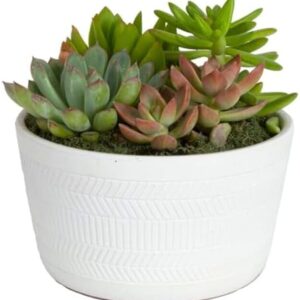Cacti are some of the most low-maintenance and hardy plants you can have in your home. With their unique shapes and beautiful blooms, it’s no wonder they have become a popular choice for indoor plant enthusiasts. However, despite their reputation for being easy to care for, there are some common mistakes that can prevent your cacti from thriving. To help you avoid these pitfalls, we spoke to plant care experts and compiled a list of the top cacti care mistakes to avoid.
One of the biggest mistakes people make when caring for cacti is overwatering. Many people mistakenly believe that cacti require frequent watering, but the truth is, most cacti are adapted to survive long periods of drought. Overwatering can lead to root rot, which is a serious condition that can kill your cactus. To avoid overwatering, only water your cactus when the top inch of soil is dry to the touch. This usually means watering your cactus once every two to four weeks, depending on the size of the pot and the environment in which it is kept.
Another common mistake people make is using the wrong type of soil. Cacti require well-draining soil that allows water to flow through quickly. Using regular potting soil or soil that retains too much moisture can lead to root rot. Instead, opt for a cactus-specific soil mix or create your own by mixing equal parts of potting soil, sand, and perlite. This will ensure that your cactus has the proper drainage it needs to thrive.
Placement is another crucial factor in caring for cacti. While cacti are resilient plants that can tolerate a wide range of conditions, they do require adequate sunlight to thrive. Place your cactus in a sunny spot where it can receive at least six hours of direct sunlight per day. If you notice your cactus starting to stretch or lean towards the light, it may not be receiving enough sunlight. In this case, consider moving your cactus to a sunnier location to promote healthy growth.
One mistake that many people make when caring for cacti is neglecting to repot them when necessary. Cacti have shallow root systems that can quickly outgrow their pots, leading to overcrowding and stunted growth. To keep your cactus healthy and thriving, repot it every two to three years or when you notice that the roots are starting to grow out of the drainage holes at the bottom of the pot. When repotting your cactus, be sure to use a pot that is slightly larger than the current one and fresh cactus soil to provide your plant with the nutrients it needs to continue growing.
Failing to protect your cactus from pests is another common mistake that can hinder its growth. While cacti are generally pest-resistant plants, they can still fall victim to common pests such as mealybugs, spider mites, and scale insects. To prevent pests from infesting your cactus, regularly inspect your plant for signs of infestation, such as yellowing or wilting leaves, and treat any infestations promptly using an organic insecticidal soap or neem oil.
Lastly, one of the most important aspects of caring for cacti is understanding their unique watering needs. Cacti have evolved to survive in arid environments with minimal water, so it’s crucial to mimic these conditions in your home. In addition to avoiding overwatering, it’s also important not to underwater your cactus. While cacti can survive long periods of drought, they still require some water to thrive. To ensure your cactus stays healthy, water it deeply until water begins to flow out of the drainage holes, then allow the soil to dry out completely before watering again.
In conclusion, caring for cacti is a relatively simple task that can be rewarding and enjoyable. By avoiding common mistakes such as overwatering, using the wrong soil, neglecting to repot, failing to protect from pests, and understanding their unique watering needs, you can ensure that your cacti remain healthy and thriving for years to come. With a little bit of care and attention, your cacti can continue to bring beauty and joy to your home for years to come.






